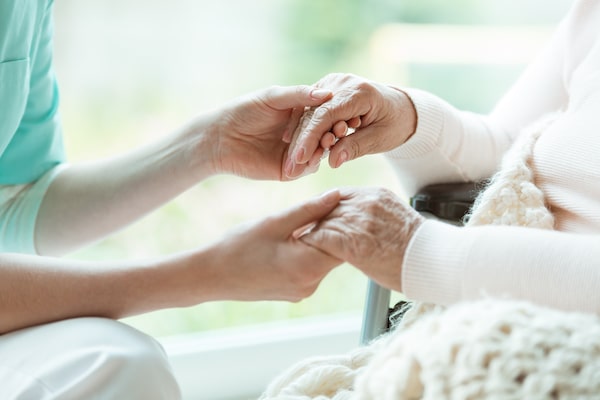The Globe and Mail and Morneau Shepell created the Employee Recommended Workplace Award to honour companies that put the health and total well-being of their employees first. Registration for the 2020 Employee Recommended Workplace Award is now open. Register at employeerecommended.com.
Read about the 2019 winners of the award at this link and watch a video from the winners here. You can also purchase the benchmark report that outlines findings from 2018 at this link.

A recent report found that 28 per cent of Canadians have taken on the role of caretaker for a loved one in the past year.KatarzynaBialasiewicz/Getty Images/iStockphoto
One challenge for many Canadian adults is the additional responsibility, above job and family, of caring for a family member or friend who has long-term health concerns, a physical or mental disability, or is dealing with the effects of aging. In fact, a 2017 report by the Vanier Institute of the Family found that 28 per cent of Canadians report having taken on the role of caretaker for a loved one in the past year.
With Canada’s aging population, elder care demands are expected to increase. This will require more unpaid caretakers taking time out of their already-demanding lives to assist loved ones who need additional support.
Although this responsibility can be challenging, it also can be rewarding. This microskill reminds caregivers of the importance of taking care of themselves. The goal is to reduce the risk of caretaking responsibility negatively impacting the level of care, the caretaking relationship and the caretakers themselves.
Awareness
Responsibility for caretaking can become stressful if caretakers don’t manage their stress levels, which can increase for those supporting someone who has gone through a trauma, such as the loss of a limb, or who is facing a medical crisis, such as terminal cancer, moving through the stages of dementia, suffering from depression or dealing with alcoholism.
While many caretakers may not be exposed to as many distressing events as a first responder, nurse or doctor, even a single traumatic experience can take a toll.
There is a risk that some caregivers may develop compassion fatigue, which has been described by mental health and social work professor Charles Figley, now at Tulane University in New Orleans as the “cost of caring for others in emotional pain.”
Over time, some caregivers can become tired and overwhelmed by their caretaking responsibilities, along with the demands of life, and push themselves to the point of burnout. Caretakers who are not paying attention to their potential for compassion fatigue or burnout are at risk.
For caretakers, the first step toward reducing risk is becoming aware. Pay attention to warning signs such as feeling less empathic, having a harder time falling asleep, or becoming more irritable and less patient with a loved one. If this happens, it’s important for you to take a step back to self-evaluate your risk for compassion fatigue. For instance, the Compassion Fatigue Risk Quick Survey can give even those not in helping professions a sense of their risk.
Accountability
Whether you’re a professional or a loved one providing care, accept the fact that caretaking can take an emotional and physical toll on your health. When this happens, your effectiveness decreases, and risk increases for compassion fatigue, burnout or less-effective coping strategies such as overeating or drinking.
Caretakers need to reduce their risk for compassion fatigue by being accountable for their own self-care and buying into the notion that providing good care for others means taking care of themselves first.
Action
The following are examples of what a caretaker can do to take care of themselves:
- Keep social connections – Some caretakers who come home from work and then take care of a loved one for the rest of the day can feel isolated and alone – even trapped. To reduce this risk, take time to maintain important personal relationships, such as staying in touch with friends.
- Create a daily action plan – Make a daily list of what must be done, including self-care. The more decisions that can be made in advance, the less chance there is for you to be distracted.
- Adopt a self-care plan – Exercise, diet, sleep and healthy lifestyle choices are areas where making good microdecisions matter to charge a caretaker’s battery. As well, adopting techniques such as deep breathing, yoga, meditation and mindfulness that promote mental fitness can support how caregivers see and interact with the world.
- Be realistic – Accept that we all have limitations; you won’t always be perfect and may make some mistakes. Realize that you may not be able to do everything. Give yourself-permission to ask for help, accept help from others, and have self-compassion.
- Plug into caretaker resource networks – Many resources are available through the internet. They include support groups, educational classes, meal delivery, housecleaning and care support services.
Bill Howatt is the chief of research for work force productivity at the Conference Board of Canada and a co-creator of the Employee Recommended Workplace Award.
You can find other stories like these at tgam.ca/workplaceaward.
Download our e-books: Inch by Inch, Make Life a Cinch; Little Steps to Big Change; Staying Afloat.
 Bill Howatt
Bill Howatt